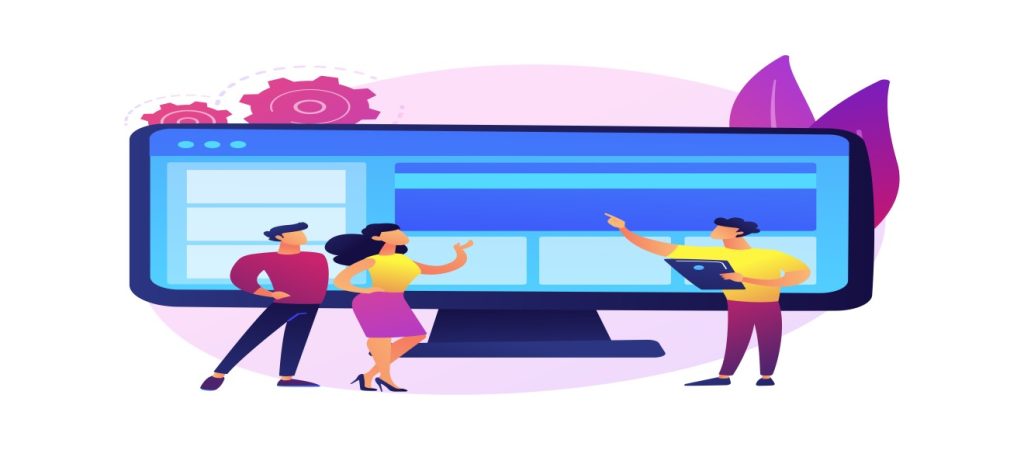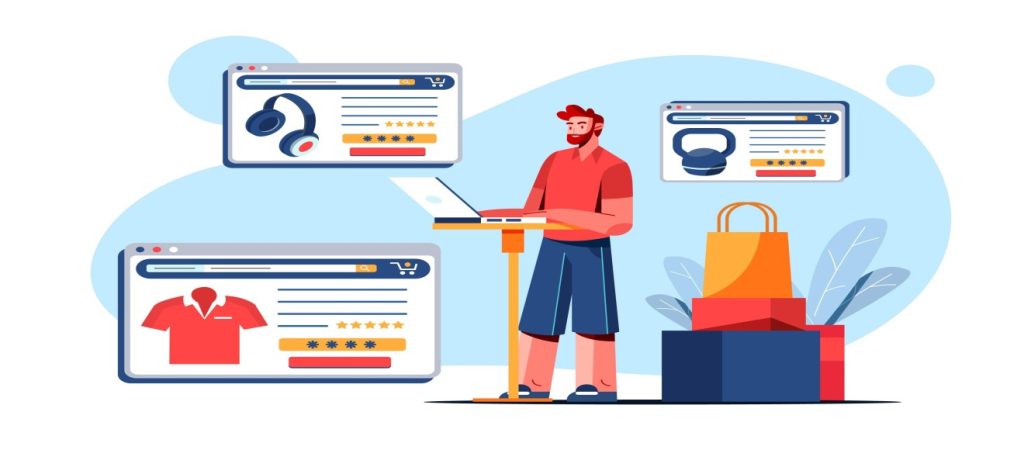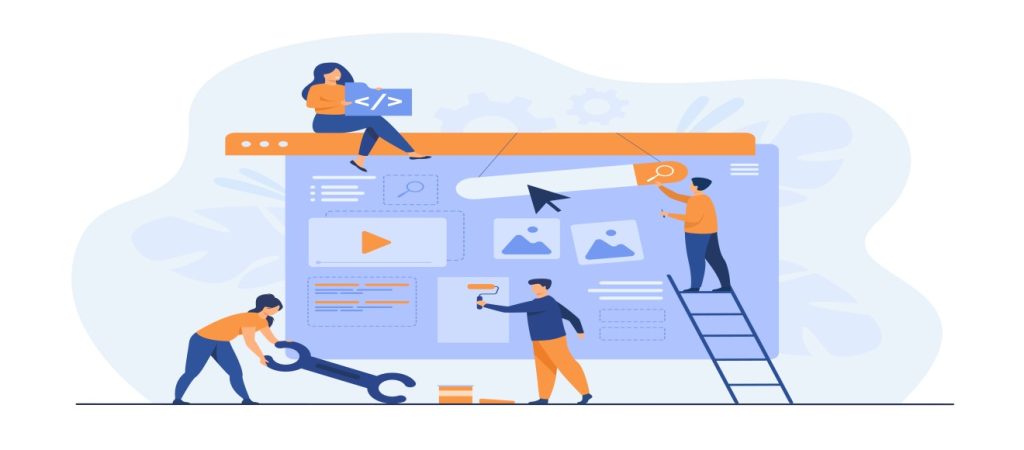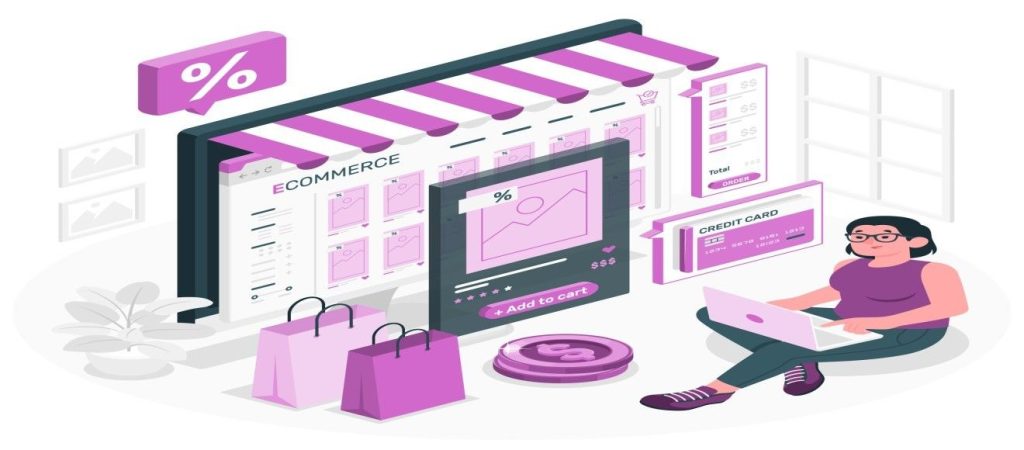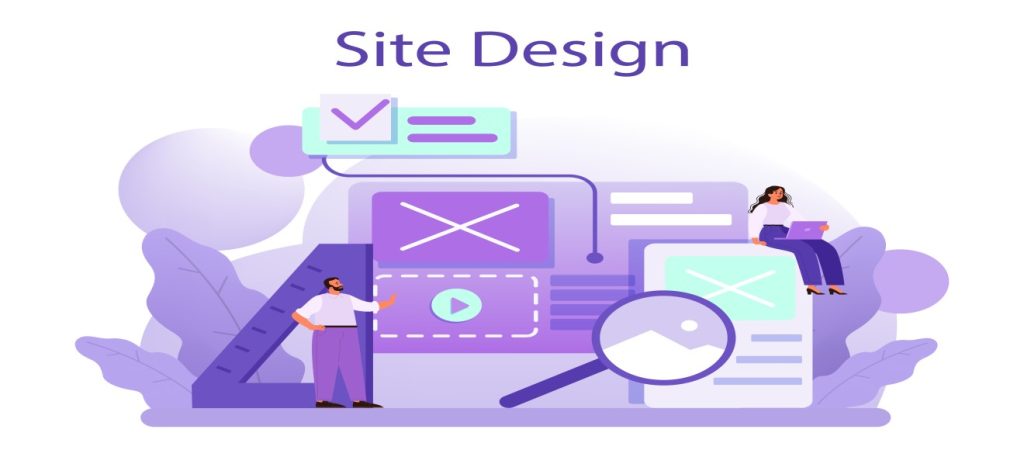Common web design services offered by Sunstone Digital Tech are designed to support small businesses in achieving their digital goals. We provide comprehensive solutions like website redesign, WordPress development, Shopify development, and ongoing website maintenance.
Overview of Web Design Services
Introduction to Web Design Services
Web design services cover a wide range of offerings that aim to create and improve websites. These services include website development, custom website design, and responsive web design. A well-designed website is key to building a strong online presence. It attracts visitors and helps engage users effectively. Custom website design allows businesses to shape their sites based on specific needs and branding requirements. This ensures the final product connects with their target audience.
Website development services deal with the technical aspects of creating a site from scratch or upgrading existing ones. This includes coding, integrating content management systems (CMS) like WordPress or Shopify, and adding e-commerce features for businesses looking to sell products online. The right mix of these components creates a strong digital platform that supports various business objectives.
Learn more: “Best Web Design Practices for Beginners: Sunstone Digital Tech Guide” and “How to Choose a Web Design Agency: Essential Tips”
Benefits of Professional Web Design
Investing in professional web design brings many benefits that can greatly influence a company’s success. One major benefit is improved user experience (UX) design; an easy-to-use layout helps visitors navigate the site without hassle, boosting satisfaction and retention rates. Plus, mobile-friendly designs are crucial in today’s world; they allow smooth access across devices—important for reaching more people.
Branding is also essential in professional web design. It creates a visual identity through consistent colors, fonts, and images aligned with company values. Good branding builds trust among customers while helping businesses stand out from competitors. Moreover, strategies for conversion rate optimization (CRO) integrated into web design help turn visitors into customers by making it easier for them to take actions like buying or inquiring.
Importance of Responsive Web Design
Responsive web design plays a critical role in creating websites that adjust smoothly to different screen sizes—from desktops to smartphones—providing the best viewing experience on any device. As many users depend on mobile devices for internet browsing, prioritizing mobile optimization has become vital for staying relevant in competitive markets.
User interface (UI) design supports responsive efforts by focusing on how users interact with digital interfaces; this involves button placement, menus, and overall appearance tailored for various screens. By adopting responsive techniques along with thoughtful UI choices within your web development plan, you ensure accessibility while maximizing usability—a crucial factor influencing visitor engagement and search engine rankings.
In summary, we offer extensive web design services aimed at crafting visually appealing sites while enhancing functionality through strategic planning focused on user experience—all key elements contributing to effective online presence management.
Core Website Development Solutions
Custom Website Development
Custom website development is crucial for businesses wanting a unique online presence. This includes custom website design that aligns with a brand’s identity and user preferences. Companies can rely on comprehensive website development services to create visually appealing and functional sites. Additionally, web app development enhances the user experience by adding interactive features that improve website usability. Effective digital branding strategies are vital for building a strong online image and ensuring consistency across all platforms.
WordPress Development
WordPress development is one of the top choices for content management systems due to its ease of use and flexibility. It allows businesses to manage their websites without needing extensive technical skills. Integrating robust SEO services into WordPress sites can greatly increase visibility in search engines. Mobile optimization is also important, and responsive web design ensures that websites work well on various devices. Together, these features empower brands to maintain a strong online presence while effectively managing their content.
Shopify Development
Shopify development provides specialized solutions for e-commerce businesses looking to thrive online. E-commerce web design focuses on creating attractive and user-friendly storefronts that engage customers. Key components include payment integration and SSL certificates, which ensure secure transactions. These elements build customer trust, a crucial factor in driving sales and enhancing overall business performance through reliable online business solutions.
Additional Considerations for Website Development
Website Performance Optimization
Website performance optimization is essential for any successful site. Techniques aimed at improving loading speeds help enhance user experience. Using analytics tracking tools offers insights into visitor behavior, enabling continuous improvement based on real-time data.
Security Measures
Prioritizing security measures is necessary within any web strategy. Implementing robust website security protocols alongside SSL certificates protects sensitive customer information from cyber threats. This protection is increasingly important as data breaches become more common in the digital landscape.
Client Portal Development
Client portal development adds value by creating personalized spaces where clients can access resources or communicate directly with service providers. This feature fosters stronger relationships between businesses and their clientele by promoting transparency and accessibility.
Specialized E-commerce Solutions
E-commerce Website Development
Creating an effective e-commerce website is key to establishing an online presence. This involves e-commerce web design that focuses on user engagement. Businesses benefit from custom website design which aligns the site with their brand identity.
When looking for website development services, popular choices are Shopify and WordPress. Shopify development allows for easy store setup with built-in payment options, while WordPress development offers flexibility through various plugins and themes, making it suitable for different business needs.
Payment Integration and SSL Certificates
Website security plays a vital role in e-commerce, especially when dealing with customer data during transactions. Proper payment integration ensures customers can pay using various methods like credit cards or digital wallets, which enhances their shopping experience.
Alongside secure payment systems, SSL certificates are essential. They encrypt information shared between customers and the site. This protects against threats and builds consumer trust—an important part of strong digital branding.
UX/UI in E-commerce Sites
The success of an e-commerce platform depends largely on its UX/UI design. A good user experience (UX) makes navigation easy, helping users find products quickly. Effective UI design combines visuals with functionality, leading to engaging interactions.
A mobile-friendly design is increasingly necessary as many consumers shop on smartphones. Prioritizing responsive web design means the site works well across different devices without losing usability.
Key Features of Successful E-commerce Websites
Successful e-commerce sites share several important features:
- User-Friendly Navigation: Easy-to-use menus allow quick access to product categories.
- Product Showcase and Categorization: Clear images and organized listings enhance visibility.
- Secure Checkout Process: A smooth checkout reduces cart abandonment rates by making the process easy and secure.
These features greatly impact overall website usability, which is essential for improving conversion rates.
Importance of Mobile Optimization for E-commerce
With mobile commerce growing rapidly, optimizing websites for mobile use is crucial for improving customer engagement. Responsive web design enables websites to adapt to different screen sizes while keeping functionality intact. This not only helps retain visitors but also enhances search engine rankings, attracting more traffic to your online store.
Analytics Tracking for E-commerce Performance
Analytics tracking is a powerful tool for monitoring performance metrics such as visitor behavior and sales conversions over time. Using effective analytics tools provides insights into what drives traffic, allowing businesses to refine marketing strategies. This approach optimizes both search engine rankings and overall website performance, helping e-commerce sites thrive in a competitive environment.
Enhancing User Experience and Interface
UX/UI Design Principles
Good UX/UI design is key to making websites that attract and keep visitors. A strong user experience (UX) helps users find their way around the site easily. Meanwhile, a great user interface (UI) makes the site visually appealing. Here are some main principles:
- Clarity: Make sure information is easy to understand. Use simple language, clear menus, and logical layouts.
- Consistency: Keep design elements like colors and fonts the same across the site. This builds trust and makes users feel at home.
- Accessibility: Create an inclusive design that everyone can use, including those with disabilities. Features like alt text for images or keyboard shortcuts can really help.
Focusing on these principles can boost website usability, allowing users to find what they need quickly while enjoying a pleasant experience.
Mobile-Friendly Designs
More people browse the web on mobile devices than ever before, making mobile optimization crucial in web design today. Responsive web design lets sites work well on any screen size without losing their look or function.
Key features of mobile-friendly designs include:
- Fluid Grids: Use flexible grid layouts to ensure elements scale properly on all devices.
- Touchscreen Navigation: Buttons should be large enough for easy tapping, making browsing enjoyable on phones and tablets.
- Performance Optimization: Quick-loading pages matter! Reducing image sizes and optimizing scripts helps improve load times, which can keep customers engaged.
A strong focus on responsive web design can enhance performance and lead to higher conversion rates by offering a seamless browsing experience.
Interactive Elements
Adding interactive elements to your web design can boost user engagement significantly. Graphic design services can help create eye-catching features like sliders or animations that draw visitors in.
Here’s how interactive elements contribute to conversion rate optimization:
- Landing Page Design: Great landing pages mix engaging visuals with clear calls-to-action (CTAs), directing users towards key actions.
- Digital Branding Integration: Using consistent branding in interactive features strengthens brand identity and builds connections with customers.
Using interactive elements not only attracts visitors but also encourages them to take meaningful actions on your site—ultimately improving usability and helping you meet your business objectives.
Additional Digital Marketing Support
SEO Optimization Techniques
SEO is key for better online visibility and more organic traffic. Using effective SEO services can help businesses grow. One crucial part is thorough keyword research. This process finds the words potential customers use when searching for products or services. By optimizing website content with these keywords, companies can enhance their search engine ranking.
Local SEO techniques can also improve visibility in specific areas, bringing in nearby customers. This involves creating location-specific content and keeping an updated Google My Business listing. Regular checks on website performance optimization metrics ensure that sites load fast and offer a smooth user experience. These factors are essential for keeping visitors and boosting rankings.
Content Management Systems (CMS)
Using strong content management systems, like WordPress, boosts website usability and supports digital marketing efforts. A well-organized CMS makes it easy to update content without needing technical skills, keeping websites fresh with minimal hassle.
Incorporating features such as customizable themes and plugins allows businesses to adapt their websites to match brand identity and functionality. Moreover, good WordPress development practices optimize sites for both search engines and user interaction, enhancing visitors’ overall experience.
Video Content Integration
Integrating video content into web design greatly improves customer engagement. Videos provide dynamic visuals that quickly grab attention. Using video content integration on landing pages or product descriptions can increase conversion rates since videos often communicate information more effectively than text.
Sharing this video content on social media platforms broadens reach and strengthens online presence. Engaging videos keep users on the site longer and encourage shares on social networks—an important aspect of modern digital marketing aimed at increasing brand awareness.
Email Marketing Services
Email is still one of the most effective tools in digital branding when used well through targeted campaigns based on audience interests. Strong email marketing services focus on lead generation by sending personalized messages directly to potential clients’ inboxes.
Segmenting audiences based on behavior allows marketers to create communications that resonate with various groups—boosting open rates and conversions compared to generic emails. Regular performance analysis helps refine strategies over time, ensuring effectiveness in meeting business objectives.
Analytics Tracking and Website Audits
Maximizing online success requires thorough analytics tracking to understand visitor behavior on a site. Conducting regular website audits offers insights into areas needing improvement—from page loading times to mobile responsiveness—all critical for user satisfaction.
This data-driven strategy leads to informed decisions about updates necessary for better conversion rate optimization (CRO). Addressing identified issues through strategic changes based on audit results ensures growth that aligns with changing market demands.
Social Media Integration Strategies
Bringing social media channels into your web design creates seamless online business solutions that expand reach beyond traditional methods alone. Effective social media integration encourages visitors not just to engage with your site but also share its contents across their networks—greatly increasing exposure without extra costs tied to paid advertising.
Including social sharing buttons alongside strong calls-to-action throughout relevant pages encourages interaction between brands and consumers, driving traffic back towards core offerings while building community ties essential in today’s competitive environment.
Ongoing Maintenance and Redesign Strategies
Regular Website Maintenance Packages
Keeping your website in shape is key for good performance and security. Regular website maintenance packages offer essential services to keep things running smoothly. These often include:
- Routine updates for content management systems (CMS), plugins, and themes.
- Website performance optimization with speed enhancements.
- Uptime monitoring to ensure your site is always available.
These packages also incorporate digital marketing efforts to boost your online presence. For instance, analytics tracking can help you understand visitor behavior and measure site performance. By proactively fixing issues, like broken links or slow-loading pages, businesses can improve user experience and protect against security risks.
Effective Redesign Tips
A website redesign isn’t just about looking nice; it should also enhance how users interact with it. Here are some effective tips:
- Use custom website designs that represent your brand well.
- Implement user experience design principles to make navigation intuitive.
- Focus on responsive web design so that your site works well on all devices.
Mobile optimization is a must these days, as many people browse from their phones. To boost conversion rates, consider strategies like simplifying navigation, using clear calls-to-action (CTAs), and creating effective visual hierarchies that capture user interest.
Importance of Regular Updates
Regular updates are necessary to keep your site relevant and secure. Content management systems need timely patches for both new features and security fixes. This is where regular updates play a major role:
- Fresh content signals search engines that your site is active, helping SEO services.
- Updating graphic design helps keep visitors interested.
- Ensuring local SEO information stays current is key for attracting nearby customers.
Analyzing Website Performance
Analyzing how well your website performs should be an ongoing effort. Here’s what you can do:
- Use analytics tracking tools to get insights into visitor traffic and engagement levels.
- Regularly check search engine rankings to spot areas needing improvement.
- Conduct A/B testing with different layouts or content versions to see what works best with users.
This analysis helps you adjust your strategies based on real data rather than guesswork.
User Feedback and Testing
Gathering user feedback can greatly enhance the effectiveness of your website. Consider these approaches:
- Conduct surveys or usability tests to see how visitors use various elements of your site.
- Focus on user interface design by adhering to UX/UI principles that promote customer engagement.
By testing iteratively, you can continually improve the experience based on actual user input, fostering loyalty through thoughtful adjustments. Engaging with users shows that you value their opinions while enhancing satisfaction levels over time.
Frequently Asked Questions: FAQs about Common Web Design Services Offered by Sunstone Digital Tech
What types of website audits does Sunstone Digital Tech provide?
Sunstone Digital Tech offers comprehensive website audits. These audits assess website performance, usability, and security. Our evaluations help identify areas for improvement and inform future strategies.
How can testimonials integration enhance a website?
Testimonials integration builds trust with visitors. Positive feedback from clients showcases your brand’s reliability. This feature can significantly improve conversion rates by influencing potential customers.
What is CRM integration, and why is it important?
CRM integration connects your website with customer relationship management systems. This streamlines data handling and improves customer interactions. Effective CRM integration enhances overall customer experience and retention.
Do you offer membership systems for websites?
Yes, we offer custom membership systems tailored to client needs. These systems manage user registrations and access to exclusive content. This feature enhances engagement and loyalty among users.
What are learning management systems (LMS)?
Learning management systems facilitate online education and training. They allow businesses to deliver courses effectively. LMS improve user engagement by providing interactive learning experiences.
Common Web Design Services Offered – Additional Key Points
- Print Design Services: We provide print design services for marketing materials.
- HTML, CSS, JavaScript, PHP: Our team uses these languages for effective web development.
- A/B Testing: We conduct A/B testing to optimize website performance based on user behavior.










